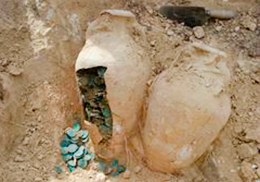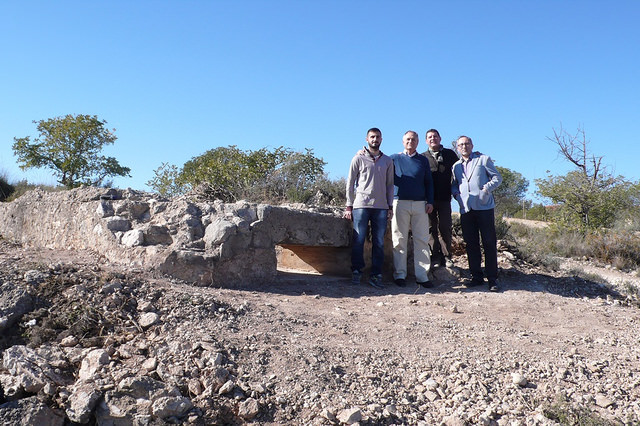
Within a total of 19 anaphoras, bronze pieces have been found; such pieces worked as coins during the Roman Empire and hold, today, a great historical value. Such heirlooms, which date back to Centuries III and IV ac, were found thanks to some canalisation works which took place at Tomares, a municipality in Seville.
2 may 2016
“This is a discovery which we can already consider of an enormous importance although it is yet to be studied and analysed. It is a single set with very few parallels. Indeed, in the history of the Roman Empire and the Lower Roman Empire in Spain, we do not know anything similar”, ensured Ana Navarro, current head of the Archaeological Museum of Seville, where the pieces are kept.
Such discovery, which took place last Wednesday, holds an added value as the containers where the coins were found are not the most common either: “They are not anaphoras to keep wine or oil, these are smaller and were used to transport other goods. The surprising part is that they used them to keep money”, Navarro explained.
We already know anaphoras but, hoe were the bronze coins? Navarro gives us details: “on the head, we can find the figures of emperor Maximiano or Constantine. On the reverse, there are several Roman allegories such as abundance”. With such evidences, they have looked for diverse of opinions to understand the historical dimension of the reality which is being faced: “we have already sounded out different Italian, English and French experts and we all agree on the fact that this could be one of the most important discoveries on the Roman empire. This is a very important finding, but until we have studied, we cannot measure it. It will probably be one of the very few findings of this kind in the Empire”, she stated.
It is a very extensive and laborious work. They have not even had the time to classify a tenth part of all the coins, so the width of the chronological frame is yet to be defined. In fact, the possibility of the coins being a part not only of Maximiano’s and Constantino’s scope but also of that of Diocleciano’s has not been ruled out yet. “We rule nothing out”, stated the archaeological director.
Added to the wide task they have ahead, they have encountered several problems (out of the 19 anaphoras found, a dozen were broken during the works and the other nine are still franked), although the expectations are great. “We do not know what we will find”, said Navarro, who does not feel capable of giving a budget on the discovery. “Probably, we would be talking about millions of euros, but its main value is archaeological” she clarifies.
Another curiosity which is worth mentioning is that archaeologists have also found that some of the coins were silvered. Additionally, Navarro casted light on the first works, which are centred on the cleaning of the coins in order to avoid their deterioration (due to the weather conditions) and, as commented above, on cataloguing. It is important not to forget, as reminded by the expert, that “all the area south to the Guadalquivir river is very rich in archaeological remains. We must remember that, during the Roman Empire, this area was very strong from the point of view of economy and production. There were villas, the Italic city was very close...”
Meanwhile, apart from the discovery, the regeneration works are still taking place at Tomare’s natural environment. “Technicians gave permission for it to be like that”, municipal sources explained. The conflict has arisen between both interested parties; the general director of Cultural Goods and Museums, Araceli García, has announced that the territorial delegation of the Government is going to request the Town Hall to stop the works and fence the area, as it seems indispensable to continue with the archaeological excavation.








